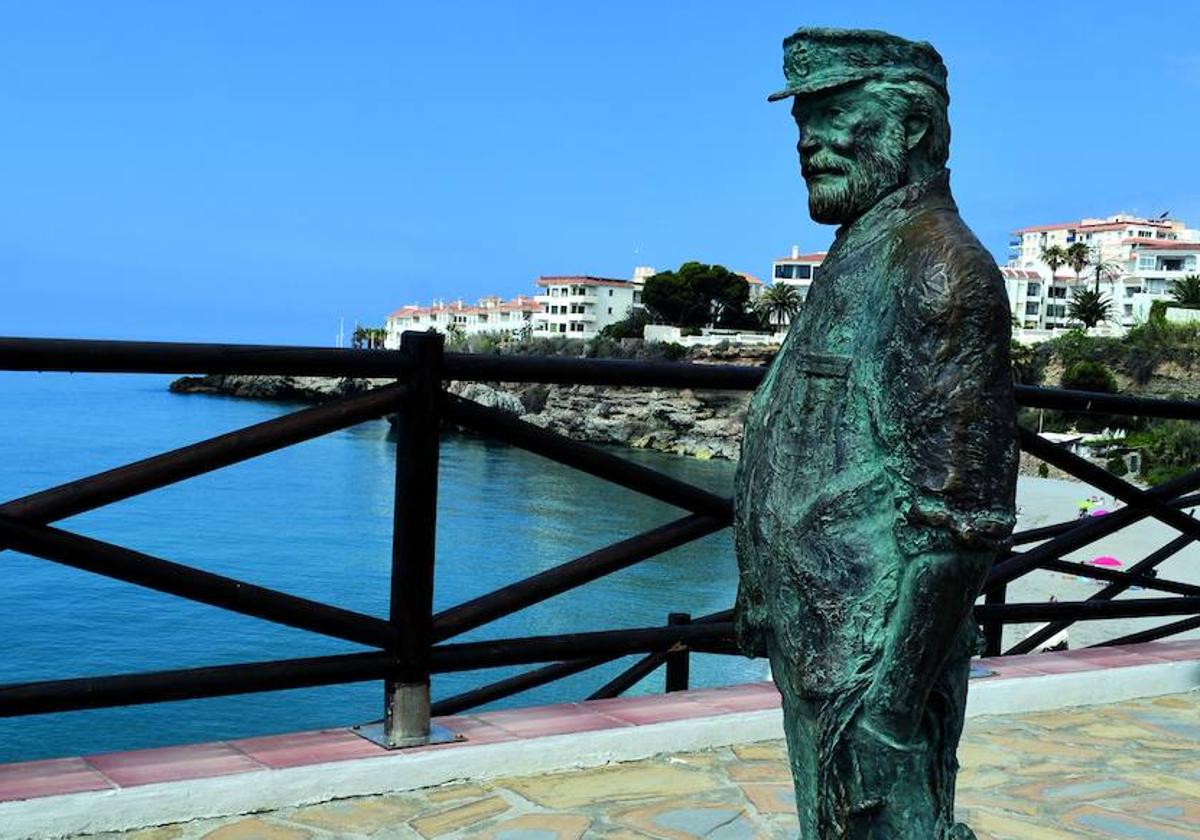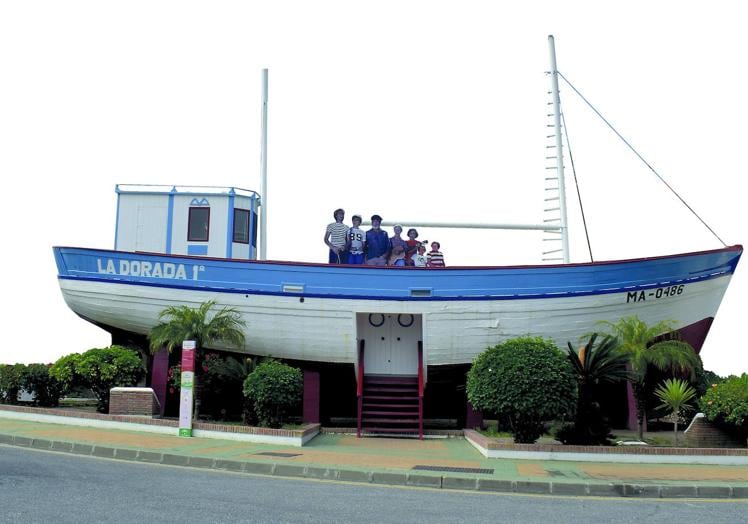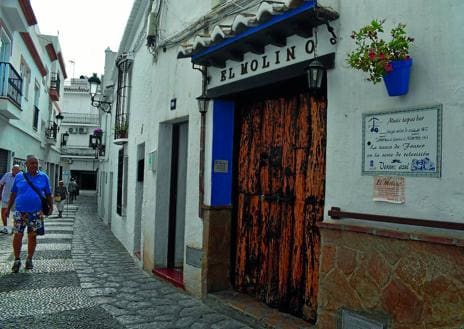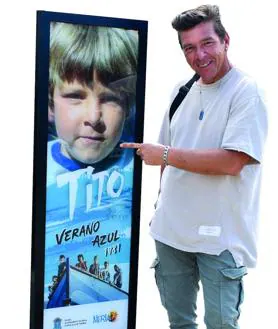

Sections
Highlight

Jennie Rhodes
Nerja
Wednesday, 19 July 2023, 09:32
Anyone visiting Nerja might be struck by the number of things called Verano Azul (blue summer) in the town. Right at the entrance to the popular tourist destination is a park, Parque Verano Azul; there are also Apartamentos Verano Azul and a housing development and other properties, all with the same name.
Those visiting from neighbouring Portugal and France, or Latin America and even Czechia, Poland and Bulgaria as well as Angola will probably get the connection to the hit 1980s television series, which was almost as popular in those countries as it was here in Spain. However Verano Azul, which was mainly filmed in Nerja as well as other locations in Vélez-Málaga and Almuñécar, was never aired in English-speaking countries.
Verano Azul was broadcast between 1981 and 1982 in Spain and centred around the friendship and adventures of a group of children and teenagers whose families were spending the summer in the town.
Teenagers Javi, Quique, Bea and Desi, and younger boys Piraña and Tito (Bea’s little brother) befriended Julia, an artist who was also spending her summer in the town; a local retired fisherman, Chanquete; and Pancho, a fellow teenager whose family ran the local dairy.
Other references to the series can be found around Nerja, including Tienda Pancho, which is a shop at the premises of what was in the series Pancho’s dairy. Calle Antonio Ferrandis Chanquete, which leads to Parque Verano Azul, is named after the late actor who played the iconic fisherman. Bar El Molino in Calle San José is also known as La Tasca de Frasco as it was called in the cult series.
A statue of Chanquete stands on Mirador de Chanquete to the west of the famous Balcón de Europa, which itself appeared regularly in the programme, and the fisherman’s boat, La Dorada I, can be found at the end of Parque Verano Azul. There are plaques with the characters’ and actors’ names and faces dotted around the park too.
Chiringuito Ayo on Burriana beach featured in the series and set the stage for one of the episodes in which Pancho wanted to thank his friends and treated them to a paella made by the owner of the restaurant, ‘Ayo’, or Francisco Ortega, who played himself in the show.
It seems a great shame that Verano Azul was never shown in English-speaking countries, considering how popular Nerja is among Brits, Americans and Canadians in particular, many of whom spend their winters there and others who have chosen the place as their adopted home.



The series’ success can be put down to a number of factors, according to Miguel Joven, who played young Tito and who still lives in the town. “It was relatable, it showed children on a seaside holiday, making friends and having adventures, just like many other Spanish children did and still do,” he says.
But more importantly perhaps, explains Miguel, is the time that Verano Azul was made. “Spain had just come out of a dictatorship. Attitudes were changing and the director, Antonio Mercero, was not afraid to tackle issues that had up until recently been taboo in Spain.”
He highlights the differing attitudes between the parents, who had been born and grew up under Franco and the children, who were the first generation to know democracy and freedom. He explains that some laws were changing so quickly that episodes had to be remade to keep up with the changing times. “There is one episode that deals with divorce, but you couldn’t use that term, so instead the word separation was used. However, before the series was aired, the law changed and ‘divorce’ was an acceptable term, so the scenes that previously used the word separation were changed,” he explains.
Verano Azul also deals with the threat of development on the site of Chanquete’s boat and protests. In one episode the children discover a cave, in much the same way as the Nerja Cave was discovered by a group of children in 1959.
Now, over 40 years old, there are also aspects of the programme that are perhaps a little outdated and would not exactly be seen as politically correct now, but the show lives on and many aspects are still relatable today. As well as the more serious themes, there are teenage crushes, pop groups and other ageless ‘coming of age themes’.
Miguel spent many years giving tours of locations used in the series and of course has seen thousands of not only Spanish fans of the show, but people from other countries who watched the programme. “It’s when I started to hear people talking about what the programme meant to them that I realised what an impact it had had on people’s lives,” he says.
Sometimes he adds, it wasn’t the programme itself, but the memories that are associated with it, like watching it with loved ones who are no longer here, or other personal circumstances that were happening around the time that it was shown on television. One particularly emotive story he was told came from a family from Angola who explained that they remembered it being a “safe time” to go outside to fetch water because people would put down their arms while Verano Azul was on TV.
In fact Miguel, who was born in Germany to a German mother and Spanish father and came to live in Nerja shortly before filming began, was cast as Tito after Antonio Mercero had discovered Chiringuito Ayo. Miguel’s father was a waiter there and upon hearing that the director was looking for a boy around Miguel’s age for the youngest member of the cast, Miguel was put forward as a potential candidate.
With no previous acting experience, and unable to read at the time, he was given the role. Miguel recalls how for the 16 months of filming, his father would read the script to him every night before filming and the then six-year-old would memorise it. “I would know everyone else’s lines too and would regularly prompt them and tease them if they forgot, including the great Antonio Ferrandis,” he chuckles.
So next time you’re in Nerja, go and look for Chanquete’s statue and take a moment to contemplate the Balcón de Europa and Nerja’s coastline with him, or pick up a map from the tourist office or online: www.veranoazul.org. Look for Tienda Pancho and La Tasca de Frasco (Bar Molino) and have your own Verano Azul in the Costa del Sol’s most eastern destination. For anyone interested in watching the series, it can be accessed for free in Spanish on www.rtve.es.
Publicidad
Publicidad
Publicidad
Publicidad
Esta funcionalidad es exclusiva para registrados.
Reporta un error en esta noticia

Debido a un error no hemos podido dar de alta tu suscripción.
Por favor, ponte en contacto con Atención al Cliente.

¡Bienvenido a SURINENGLISH!

Tu suscripción con Google se ha realizado correctamente, pero ya tenías otra suscripción activa en SURINENGLISH.
Déjanos tus datos y nos pondremos en contacto contigo para analizar tu caso

¡Tu suscripción con Google se ha realizado correctamente!
La compra se ha asociado al siguiente email
Comentar es una ventaja exclusiva para registrados
¿Ya eres registrado?
Inicia sesiónNecesitas ser suscriptor para poder votar.